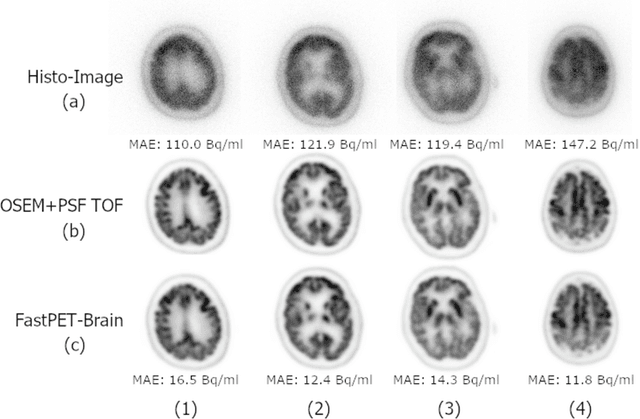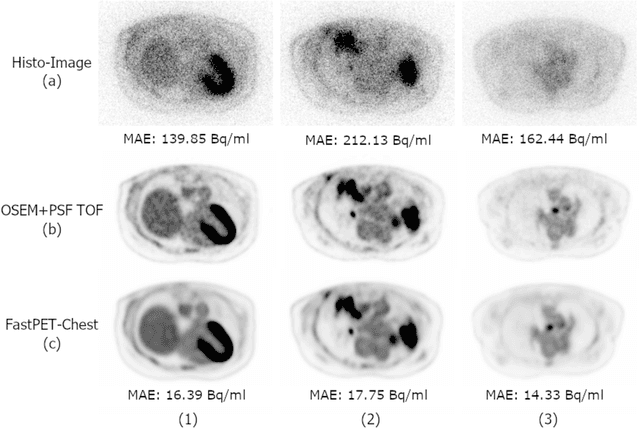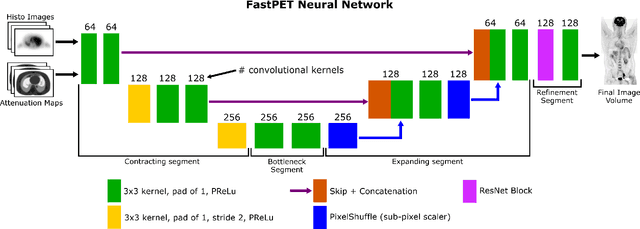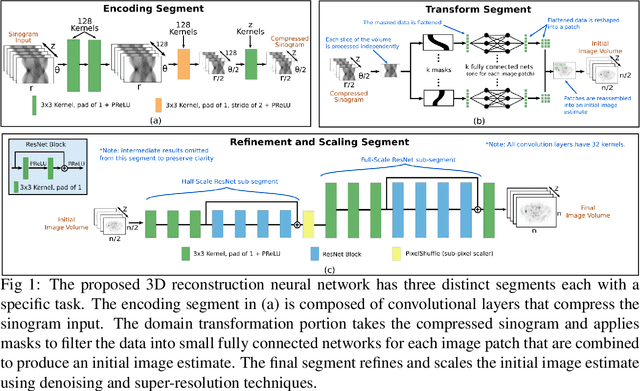Jens Gregor
FastPET: Near Real-Time PET Reconstruction from Histo-Images Using a Neural Network
Feb 11, 2020



Abstract:Direct reconstruction of positron emission tomography (PET) data using deep neural networks is a growing field of research. Initial results are promising, but often the networks are complex, memory utilization inefficient, produce relatively small image sizes (e.g. 128x128), and low count rate reconstructions are of varying quality. This paper proposes FastPET, a novel direct reconstruction convolutional neural network that is architecturally simple, memory space efficient, produces larger images (e.g. 440x440) and is capable of processing a wide range of count densities. FastPET operates on noisy and blurred histo-images reconstructing clinical-quality multi-slice image volumes 800x faster than ordered subsets expectation maximization (OSEM). Patient data studies show a higher contrast recovery value than for OSEM with equivalent variance and a higher overall signal-to-noise ratio with both cases due to FastPET's lower noise images. This work also explored the application to low dose PET imaging and found FastPET able to produce images comparable to normal dose with only 50% and 25% counts. We additionally explored the effect of reducing the anatomical region by training specific FastPET variants on brain and chest images and found narrowing the data distribution led to increased performance.
Direct Neural Network 3D Image Reconstruction of Radon Encoded Data
Aug 19, 2019



Abstract:Neural network image reconstruction directly from measurement data is a growing field of research, but until now has been limited to producing small (e.g. 128x128) 2D images by the large memory requirements of the previously suggested networks. In order to facilitate further research with direct reconstruction, we developed a more efficient network capable of 3D reconstruction of Radon encoded data with a relatively large image matrix (e.g. 400x400). Our proposed network is able to produce image quality comparable to the benchmark Ordered Subsets Expectation Maximization (OSEM) algorithm. We address the most memory intensive aspect of transforming the data from sinogram space to image space through a specially designed Radon inversion layer. We insert this layer between an initial network segment designed to encode the sinogram input and an output segment designed to refine and scale the initial image estimate to produce the final image. We demonstrate 3D reconstructions comparable to OSEM for 1, 4, 8 and 16 slices with no modifications to the network's architecture, capacity or hyper-parameters on a data set of simulated PET whole-body scans. When batch operations are considered, this network can reconstruct an entire PET whole-body volume in a single pass or about one second. Although results in this paper are on PET data, the proposed methods would be equally applicable to X-ray CT or any other Radon encoded measurement data.
 Add to Chrome
Add to Chrome Add to Firefox
Add to Firefox Add to Edge
Add to Edge